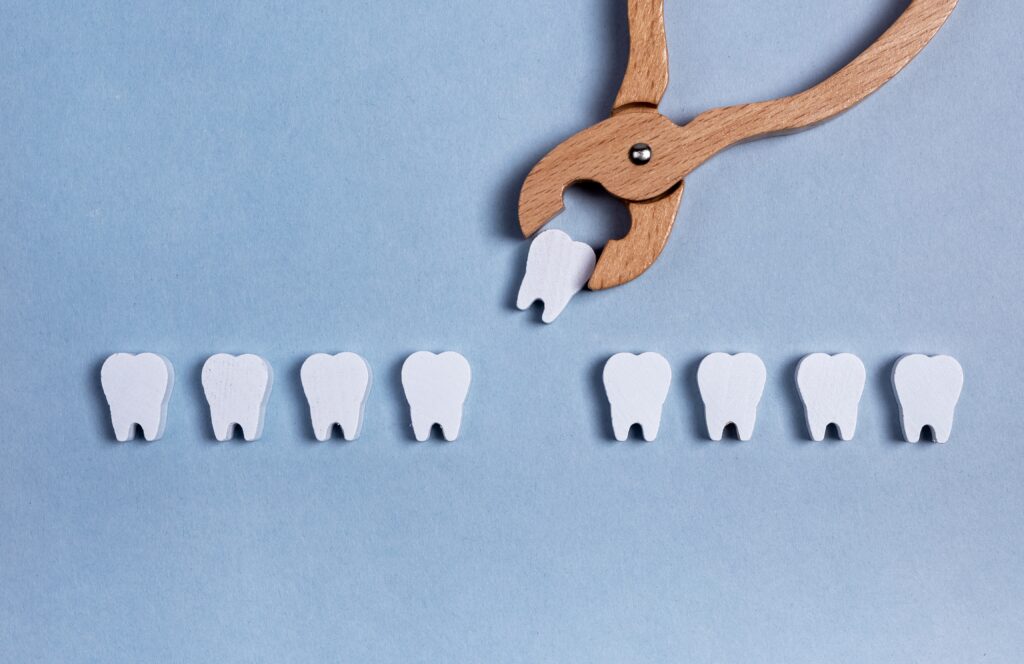In the world of oral health, nothing can be more disconcerting than discovering a hole in your tooth. It’s like stumbling upon a maze with no map or guide to help you navigate. But don’t despair! We’re here to help!
Welcome to our guide to holes in teeth! This article serves as your compass, illuminating the path toward better understanding and management of tooth decay and dental caries.
Here at Patient Empowered Dentistry, we believe that knowledge is power and aim to equip you with the necessary tools to maintain a healthy mouth and great teeth. So buckle up and prepare for an enlightening journey through the complexities of tooth decay, its causes, prevention methods, and treatment options, all presented in an easy-to-understand manner.
Let’s embark on this journey together because when it comes to your teeth you’re not just a patient; you’re an empowered partner.

The Genesis of Cavities: Causes of Holes in Your Teeth
Tooth cavities, or dental caries, are primarily caused by plaque build-up and poor oral hygiene.
What is Plaque?
Dental plaque, a sticky film of bacteria, accumulates on teeth when food particles, especially from sugary foods and drinks, aren’t properly cleaned away. Over time, this plaque hardens and turns into tartar, which can lead to gum disease and tooth decay.
What is Tooth Decay?
Tooth decay begins with the tooth enamel, the outermost layer of the tooth. Harmful bacteria in your mouth feed on sugars, producing acids that erode tooth enamel, leading to enamel decay. This process creates holes or cavities, marking the early stages of tooth decay.
What is a Cavity?
A cavity, also known as dental caries, is a hole that develops in a tooth when the hard surface, or enamel, is damaged by bacteria-produced acids.
The process begins with a tiny opening or hole in the enamel. If not treated promptly, the cavity can expand deeper into the tooth, reaching the dentin and possibly even the pulp, the central part of the tooth containing nerves and blood vessels.
Why are Cavities Bad?
Cavities can cause toothache, sensitivity, and even tooth loss if left untreated. They are a common dental problem that can be easily prevented with good oral hygiene and regular dental check-ups.
If left untreated, the infection in a tooth cavity can spread to other teeth, affecting deeper layers of tooth structure.

Stages of Dental Cavities: The Deteriorating Journey
Understanding the progressive stages of dental cavities is critical in recognizing the tell-tale signs of tooth decay and promptly seeking appropriate dental treatment.
Dental cavities don’t form overnight; they progress through various stages, each accompanied by distinct symptoms and effects on oral health. By exploring these stages, we aim to further empower you with the knowledge required to keep tooth decay at bay and safeguard your smile.
Let’s delve deeper into the gradual process of tooth decay and its impact on your teeth.
Stage 1: The Initial Stage – White Spots
At this stage, decay is barely noticeable.
It begins with the appearance of white spots on the surface of your teeth. These spots are caused by the demineralization of enamel, the outermost layer of the tooth, due to acid produced by bacteria in the mouth. This is a reaction to frequent exposure to sugary and starchy foods.
The good news is that this process is reversible. With proper oral hygiene and the use of fluoride toothpaste, you can help remineralize the enamel and prevent further decay.
Stage 2: Enamel Decay
If the initial stage is left untreated, the decay progresses to the second stage – enamel decay. The acid and bacteria penetrate the enamel, creating a cavity. You may experience sensitivity to hot, cold, or sweet foods and drinks during this stage. Unfortunately, damage to the enamel is permanent as it does not contain living cells to aid in its repair. However, your dentist can treat the cavity by removing the decayed part of the tooth and filling it with dental material.
Stage 3: Dentin Decay
The third stage involves decay reaching the dentin – the layer beneath the enamel. Dentin is softer than enamel and decays more rapidly. Symptoms at this stage include sharp pain when eating or drinking. You may also start to notice visible holes in your teeth. At this point, a simple filling may not suffice, and your dentist may recommend a crown to restore the tooth’s shape and function.
Stage 4: Pulp Involvement
When decay reaches the pulp of the tooth, which contains nerves and blood vessels, you’re in the fourth stage. This can be quite painful, and you may experience persistent toothache, especially at night. This stage of decay requires more invasive treatment, like root canal therapy, where the pulp is removed, the inside of the tooth is cleaned, and the tooth is sealed to prevent further decay.
Stage 5: Abscess Formation
The final stage of tooth decay is abscess formation. If the pulp infection is left untreated, it can spread to the root tip and surrounding tissue, resulting in an abscess – a pus-filled pocket. Symptoms include severe toothache, swelling, fever, and a bad taste in the mouth. This condition can be life-threatening and requires immediate treatment, which may involve a root canal or tooth extraction and antibiotics to fight the infection.
Remember, routine dental check ups can help identify tooth decay at its earliest stages, making treatment simpler and more effective. By understanding these stages, you’re better equipped to take proactive steps toward maintaining your oral health.

Decoding Dental Damage: Recognizing Tooth Decay
Early signs of tooth decay may include tooth sensitivity, an unpleasant taste in your mouth, and pain in your back teeth. As tooth decay progresses, you may experience more severe pain, significant pain when biting down, and visible holes in your teeth. In some cases, a tooth abscess can form around the affected tooth, which can cause sharp pain and an unpleasant taste.
Healing Holes: Treatment for Tooth Decay
Tooth decay treatment is necessary once cavities form in teeth. Your dentist will examine your teeth using X-rays to assess the extent of the decay. Depending on the severity, treatments may range from dental fillings to root canal therapy or even a dental implant for one or more teeth.
Dental fillings involve removing the decayed tissue and filling the hole with a tooth-colored material like composite resin or silver amalgam. A root canal treatment may be necessary if the decay has reached the tooth root, infecting the nerve tissue and blood vessels. This involves removing the infected pulp, cleaning the hole in the tooth, and sealing it to prevent tooth decay and further infection. A dental implant may be suggested in extreme cases where tooth loss is inevitable.
Proactive Protection: Preventing Cavities
Preventing cavities is an integral part of maintaining good oral hygiene. Regular brushing and flossing help remove plaque before it hardens into tartar. Using fluoride toothpaste can strengthen tooth enamel, making teeth more resistant to decay. Limiting sugary snacks and drinks can also help reduce plaque build-up.
Regular dental checkups are crucial for early tooth decay detection and treatment, preventing the risk of a dental abscess or tooth loss. During these visits, your dentist can provide professional cleanings and fluoride treatments to protect your teeth further.
Certain medical conditions like dry mouth or eating disorders can increase your risk of tooth decay. If you have these conditions, consult your dentist for specific preventative measures.

Taking Charge of Your Dental Health
Understanding the causes and consequences of tooth decay and tooth sensitivity is the first step toward better oral health. Regular dental visits, good oral hygiene habits such as brushing and flossing habits, and a balanced diet can go a long way in preventing dental decay and tooth cavities.
Don’t wait until you experience significant mouth pain or notice a cavity forms in your tooth. Start taking proactive steps today to prevent cavities and stop tooth decay in its tracks. This includes boosting saliva production if you suffer from dry mouth and avoiding sugary drinks that can accelerate decay.
Remember, at Patient Empowered Dentistry, it isn’t just about treating dental issues like root canals and providing professional treatment; it’s about equipping you with the knowledge and resources to take control of your dental health. This includes understanding risk factors and how an infection spreading can lead to the need for root canal therapy.
Even if you’re diligent about your dental health, don’t forget preventative dentistry. Routine dental checkups are crucial for disease control before plaque accumulates and causes more serious problems. And, while we often associate cavities with baby teeth, remember that adult teeth are just as susceptible.
So, keep brushing, keep flossing, and keep smiling! Don’t let the fear of the dentist regularly visiting, potential root canals, or stomach acid affecting your teeth deter you from maintaining a healthy, radiant smile.
